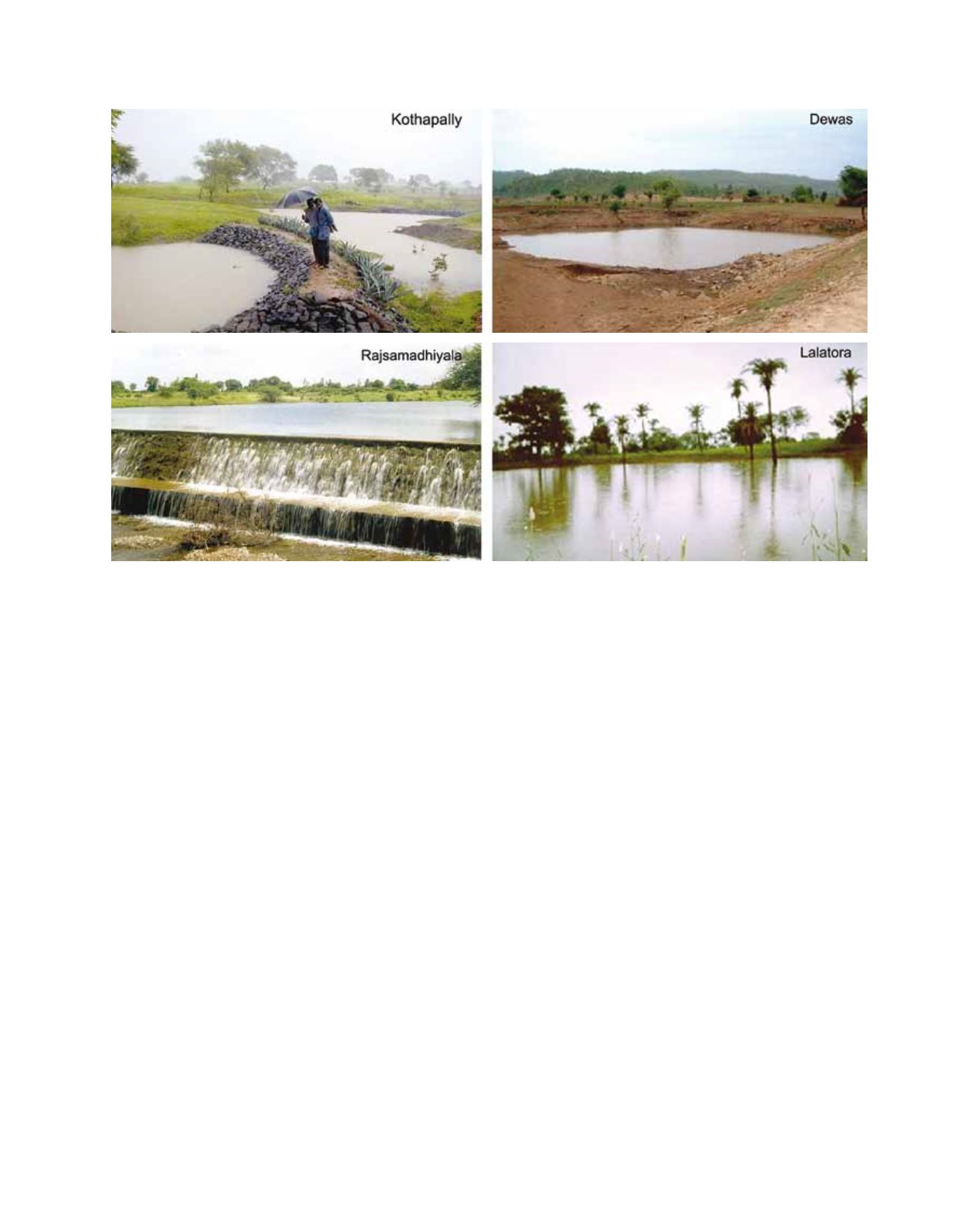

[
] 71
A
griculture
ments and use of bio-fertilizers resulted in 21-66 per cent increases in
crop yields covering three million hectares in 30 districts.
An innovative extension system was used as well as an insti-
tutional arrangement to empower the farmers through the Rytha
Samparka Kendra (the state’s extension service centre), farm facili-
tators and innovative supply chains. The missionary approach has
shown its benefit for 3.3 million farmer families since 2009 through
increases in productivity of 21-66 per cent over the farmers’ prac-
tices. For the Government of Karnataka, this translated to an annual
agricultural growth rate of 5.9 per cent during 2009-10, and 11.6 per
cent growth during 2010-11. During 2011, three million hectares
were covered in the rainy season and the economic returns were to
the tune of US$ 130 million.
ICRISAT-led consortiums under the Andhra Pradesh Rural
Livelihood Project of the Government of Andhra Pradesh and the
Department for International Development have developed knowl-
edge-sharing systems by developing a hub-and-spoke model at
Addakal, one of the most drought-prone regions in Andhra Pradesh.
The information and communication technology (ICT) based rural
knowledge centre is operated by the women’s self-help groups and
is maintained not only as a knowledge-sharing system within the
community, but also as a provider of financial services through coop-
erative banking and running a highway restaurant as to generate
income. This ICT-based knowledge hub is under the Virtual Academy
for the Semi-Arid Tropics and has been used further for providing
ICT-enabled systems to enable early warnings for disaster manage-
ment with a combination of top-down and bottom-up approaches and
community mobilization.
8
This pilot experiment revealed that the functional literacy of women
was sufficient to handle ICT information hubs at watershed/village level
and it enabled improved management of natural resources
as well as improving their livelihoods by acting as a service
provider to the community. The community actively
participated in this initiative and has shown its potential
for developing drought vulnerability assessments using
ICT as a development tool with the help of intermediar-
ies. The village knowledge centre is owned and operated
by the community. Currently, the India Meteorological
Department provides integrated advisory services for use
by the farming community at district level. This network
shares the information through email advisories, TV,
mobile telephones and the radio network, and farmers
are assisted with weather-based agro advisory through
Krishi Vignan Kendras, enabling them to take advantage
of prognosticated weather conditions and thereby form a
response strategy.
There is an urgent need to develop a climate change
network for Indian agriculture as well as for other coun-
tries in Asia and Africa by adopting a hybrid model of
using ICT where it is feasible along with traditional
communication channels like community radios, TV,
mobile telephones and trained human resources at
community and village level. This will go a long way in
building the resilience of the community to cope with
the impacts of climate change, particularly in rainfed
areas of developing Asia and Africa. Such a knowl-
edge network would enable the farmers to harness the
untapped potential of rainfed agriculture for improving
their livelihoods and achieving food security through
sustainable intensification of rainfed agriculture.
Low-cost rainwater harvesting structures
Image: ICRISAT
















